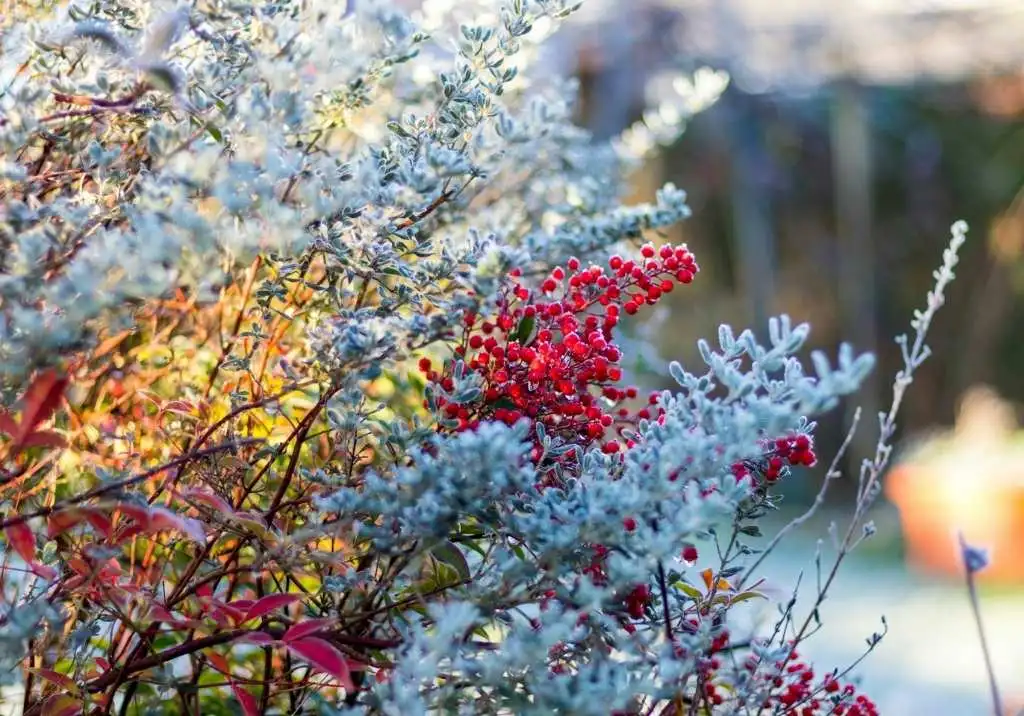As the days grow shorter and temperatures begin to drop, it’s time to prepare your garden for the challenges of winter. Taking the proper steps now not only ensures your garden survives the colder months but also sets the stage for a vibrant and healthy growing season come spring. Here’s everything you need to know about winterizing your garden, from protecting plants to caring for tools and soil.
1. Assess Your Garden’s Needs
Before diving into winter preparation, spend some time observing your garden. Different plants, soil types, and garden structures have unique needs.
- Make a garden inventory: List all your plants, noting their hardiness and specific care requirements.
- Identify problem areas: Check for drainage issues, signs of pests, or any structural damage to raised beds or fencing.
Understanding what needs attention will help you create a targeted plan.
2. Clean Up Your Garden Beds
Cleaning up garden beds is essential for reducing pests, diseases, and weeds that might overwinter.
- Remove dead plants: Pull out annuals and clear away dead foliage from perennials. Leaving decaying material can harbor pests and diseases.
- Weed thoroughly: Winter weeds can be surprisingly resilient. Removing them now prevents competition for nutrients in the spring.
- Compost healthy plant material: Only compost disease-free plants. Dispose of anything with signs of fungal infections or pests.
3. Protect Perennials and Shrubs
Perennials and shrubs often need extra protection to withstand harsh winter conditions.
- Cut back perennials: Trim dead or dying stems to about 1–2 inches above ground. This prevents rot and encourages new growth in spring.
- Mulch generously: Add a 2–3 inch layer of organic mulch around the base of perennials, shrubs, and trees. This helps insulate roots and regulate soil temperature.
- Wrap delicate shrubs: For non-hardy shrubs, use burlap or frost blankets to shield them from wind and frost.
4. Prepare Your Lawn
Your lawn also requires care to emerge lush and green after winter.
- Rake leaves: Clear away leaves to prevent mold and allow sunlight to reach the grass.
- Aerate compacted soil: Aeration improves drainage and helps grass roots absorb nutrients.
- Apply fall fertilizer: Use a fertilizer rich in potassium to strengthen grass for winter.
- Mow to the right height: Keep grass at about 2.5–3 inches tall. Shorter grass minimizes the risk of fungal diseases.
5. Winterize Trees and Shrubs
Trees and shrubs need specific attention to stay healthy through winter.
- Prune selectively: Trim dead or damaged branches, but avoid heavy pruning.
- Water deeply: Give trees and shrubs a deep watering before the ground freezes to prevent dehydration.
- Use tree guards: Install guards around young trees to protect them from rodents and deer.
6. Plant for Spring
Surprisingly, late fall is an excellent time to plant certain crops and flowers.
- Plant bulbs: Tulips, daffodils, and crocuses thrive when planted in autumn. Make sure they’re in well-draining soil.
- Sow winter crops: Garlic, onions, and winter greens like kale can be planted now for an early harvest.
- Add cover crops: Planting legumes or clover helps fix nitrogen in the soil and prevents erosion.
7. Protect Tender Plants
Tender plants that cannot survive freezing temperatures need special care.
- Bring pots indoors: Move container plants to a sunny windowsill or a frost-free garage.
- Use cloches or row covers: Protect in-ground tender plants with cloches or lightweight covers.
- Dig up and store bulbs: For non-hardy bulbs like dahlias, lift them from the ground and store them in a cool, dry place.
8. Improve Soil Health
Winter is an ideal time to focus on improving your soil for the next growing season.
- Test soil: Use a soil testing kit to determine nutrient levels and pH. Amend as needed.
- Add compost or manure: Spread a layer of organic matter to enrich the soil.
- Cover bare soil: Mulch or plant cover crops to prevent erosion and nutrient leaching.
9. Care for Garden Structures
Winter can be harsh on garden structures like raised beds, fences, and trellises.
- Inspect and repair: Check for loose screws, rotting wood, or rust. Make necessary repairs before snow arrives.
- Clean and store tools: Wash garden tools, remove rust, and apply a protective coat of oil to prevent corrosion.
- Drain irrigation systems: Empty hoses and sprinkler systems to avoid freezing and cracking.
10. Provide Shelter for Wildlife
Your garden can be a refuge for beneficial wildlife during winter.
- Leave some habitat: Allow a corner of the garden to remain wild for insects and small animals.
- Set up bird feeders: Provide high-energy foods like suet and seeds to sustain birds.
- Create shelters: Pile up leaves or install log piles for hibernating insects and amphibians.
11. Plan for Next Year
Winter is a great time to reflect on what worked and what didn’t in your garden.
- Review your successes and challenges: Keep notes on plant varieties, weather patterns, and pest issues.
- Sketch a new garden layout: Experiment with crop rotations and companion planting for better yields.
- Order seeds early: Start planning your seed orders to avoid delays in spring.
12. Embrace Winter Gardening
If you’re eager to keep gardening through winter, consider these tips:
- Try a cold frame or greenhouse: Extend the growing season for hardy greens and herbs.
- Grow indoors: Start an indoor herb garden or microgreens on a sunny windowsill.
- Experiment with winter blooms: Plants like hellebores and witch hazel can add winter interest to your garden.
Final Thoughts
Winterizing your garden is an essential task for any gardener. With proper preparation, your garden will be better equipped to handle the challenges of cold weather and emerge stronger and more vibrant in the spring. While it might seem like a lot of work, breaking the process into manageable steps ensures you’ll cover everything without feeling overwhelmed.
Take the time to care for your garden now, and you’ll reap the rewards of a thriving, healthy garden when the warmer months return. Happy gardening!



